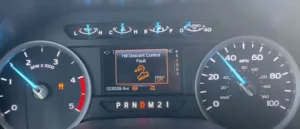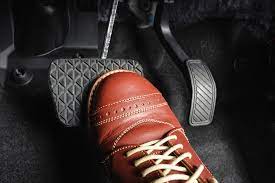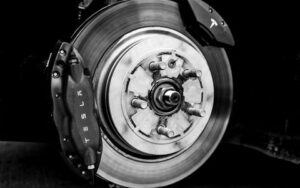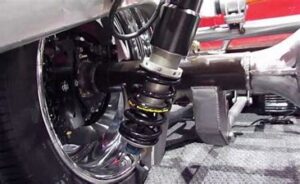Travelling downhill may be exhilarating and frightening at the same time, particularly if there is a problem with your car’s Hill Descent Control (HDC). By automatically controlling brakes, Hill Descent Control is a clever function that helps to make driving downhill safer. Unexpected difficulties may arise if this system malfunctions. This article delves into the realm of automotive malfunctions related to Hill Descent Control, elucidating the causes of these issues and providing workable fixes. Imagine yourself descending a steep hill and depending on HDC to provide a regulated and smooth ride.
Therefore, the system operates erratically all of a sudden, which could compromise safety and cause anxiety. Every driver needs to comprehend the meaning of Hill Descent Control fault, which might range from software bugs to sensor problems. We’ll simplify the intricacies so that you can identify and fix these errors on your own. So buckle up, because we’re going to take a journey to unravel the mysteries of Hill Descent Control malfunctions and give you the knowledge you need to handle downhill obstacles with ease and confidence.
Table of Contents
Understanding The Hill Descent Control Fault In Cars
Cars with Hill Descent Control (HDC) have technology that makes driving downhill more manageable. A Hill Descent Control fault is indicated when an automobile displays this trouble code. During downhill descents, HDC uses sensors to control braking, guaranteeing a safe and stable pace without the driver having to apply excessive manual brake pressure. Issues such as software bugs, electrical problems, brake system problems, or damage to sensors can all lead to a malfunction.

Think of HDC as your automobile’s reliable guide on steep hills; it will automatically use the brakes to keep the car from descending the hill at an unsafe pace. But when a problem occurs, it’s similar to your guide running into a map issue it can’t navigate correctly. The HDC system may not engage at all, engage suddenly, or apply brakes irregularly as a result of this problem. Fixing and maintaining sensors, upgrading software, examining the braking system, and making sure the electrical components are in excellent condition are all necessary to resolve HDC failures. By taking care of these problems, you can keep your car’s downhill excursions exciting and safe.
Common Causes Of Hill Descent Control Failures In Cars
There are several typical reasons for automotive problems related to Hill Descent Control (HDC), all of which have an impact on the system’s functionality. To properly diagnose and treat problems, both auto professionals and car owners must be aware of these reasons.

1. Sensor Error:
Sensor malfunction is one of the most common causes of HDC errors. The HDC system uses sensors to gather vital information, like throttle position and wheel speed, to control brakes during descents. Damage, corrosion, or electrical problems can cause these sensors to fail, which can result in erroneous data and HDC faults.
2. Software Bugs:
To provide regulated braking during downhill driving, the HDC system uses complex algorithms and software. This procedure may be interfered with by software errors or defects, leading to unexpected behaviour from the HDC system. These bugs can be addressed and avoided by keeping the car’s software updated with the most recent updates from the manufacturer.
3. Problems With The Brake System:
Given that HDC relies on automated braking, issues with the vehicle’s braking system may result in malfunctions with HDC operation. Brake system accuracy and smoothness during descents might be affected by worn brake pads, broken brake lines, or problems with brake fluid.

4. Electrical Issues:
Since HDC is an electronic system, problems with the car’s internal wiring could affect how well it functions. Improper wiring, blown fuses, or issues with the control module might cause the HDC to stop working properly. To prevent HDC malfunctions, the electrical components of the car must be regularly inspected and maintained.
5. Environmental Elements:
Extreme weather, dampness, or contact with dirt and debris are examples of harsh environmental conditions that can cause HDC failures. Malfunctions could result from these circumstances affecting the sensors or other electronic parts. These problems can be lessened with protective measures including maintaining clean sensors and making sure they are sealed properly.
Therefore, car owners can detect possible HDC problems early on by being aware of these prevalent causes. Frequent inspections can aid in preventing or addressing these problems before they worsen, particularly following off-road or demanding driving situations. To guarantee a complete diagnosis and efficient repair of Hill Descent Control issues in automobiles, it is recommended that more complicated issues be handled by a mechanic or dealership service centre.
How To Address The HDC Fault In Your Car?
It can be a little unsettling when your car’s Hill Descent Control (HDC) is malfunctioning. But do not worry! There are a few simple fixes to help you get your HDC back on track.

1. Examine Those Sensors:
Examine the sensors one more time first. These tiny devices function as your HDC’s eyes and ears, and if they’re filthy, broken, or improperly connected, they may cause problems. Make sure they are securely plugged in, clean them up, and repair any damage. Think about replacing or recalibrating a malfunctioning sensor.
2. Updates For Software Are Your Friend:
The software in your car needs to be updated, much like that of your computer or phone. New software is frequently released by manufacturers to address issues and improve system performance. For any available updates, check the manufacturer’s website or speak with your auto dealer. It’s a simple move that can have a significant impact.
3. Take Care Of Your Brakes:
For HDC to function, your brakes are necessary. Your entire brake system may suffer if your brakes aren’t operating at maximum efficiency. Examine the brake lines for any difficulties, brake fluid problems, or worn-out brake pads. In addition to fixing HDC, taking care of these brake-related issues maintains the overall health of your braking system.

4. Examine The Electrical System:
Vehicles resemble enormous electronic puzzles, with one malfunctioning piece potentially affecting other pieces. Examine the electrical system, paying particular attention to the HDC wiring. Replace blown fuses, mend any damaged wires, and confirm that the control module is operating properly. A small amount of electrical TLC goes a long way.
5. If Needed, Bring In The Experts:
Don’t be afraid to bring in the experts if you’ve tried the do-it-yourself method and the HDC gremlins are still causing you problems. Dealership service departments and mechanics are equipped with the resources and expertise to investigate the problem in depth. Sometimes all you need to sort things out is a skilled eye.
Thus, regular sensor care, staying up to speed with software updates, keeping a healthy brake system, and performing an electrical system checkup are all necessary to keep your HDC in check. And never forget that approaching the experts for assistance is perfectly acceptable if everything else fails. You’ll quickly be able to resume enjoying smooth descents with the help of these remedies.
Conclusion:
It can be unsettling to discover that your automobile has a Hill Descent Control fault, but you can guarantee that this safety feature is operating as intended by using the appropriate remedies and a methodical approach to diagnostics. Updating software releases, paying attention to sensors, and performing routine maintenance are essential procedures to keep your downhill drives safe and exciting. Recall that fixing HDC issues as soon as possible improves both your driving experience and general road safety.
![You are currently viewing Demystifying The Hill Descent Control Fault In Cars [Explained]](https://hydraulicsuspension.com/wp-content/uploads/2023/12/Hill-Descent-Control-fault.jpg)


